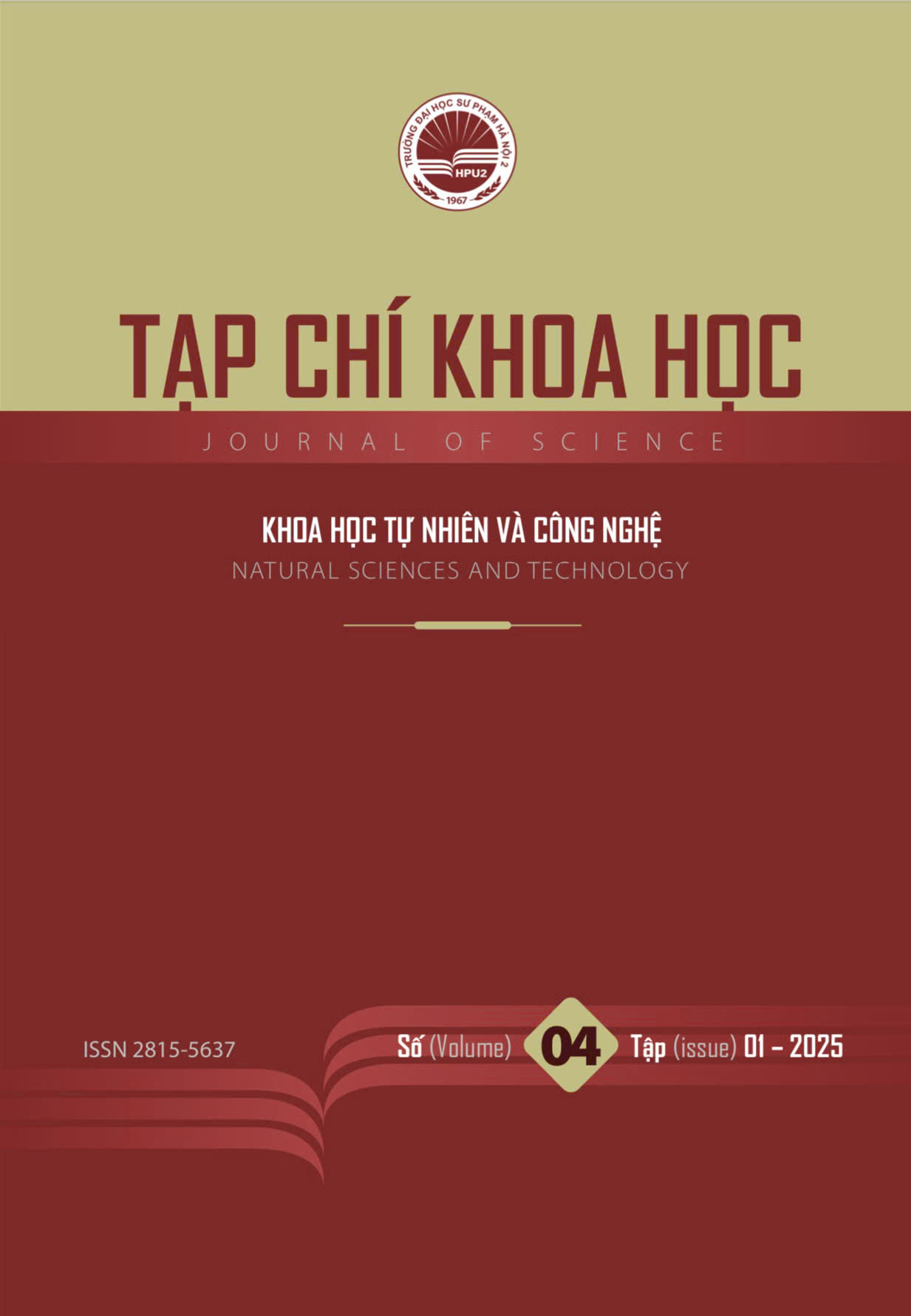Harnessing the power of Big Data: transforming market prediction and supply chain optimization
DOI:
https://doi.org/10.56764/hpu2.jos.2025.4.01.71-83Abstract
In the rapidly evolving landscape of commerce and industry, the integration of Big Data analytics stands as a pivotal innovation driving transformation across market prediction and supply chain optimization. This paper delves into the methodologies and technologies underpinning behind the harnessing of Big Data to enhance predictive accuracy in market trends prediction and streamline supply chain processes. Through comprehensive analysis and case studies, we explore how advanced algorithms, machine learning techniques, and real-time data processing can be leveraged to forecast market dynamics with unprecedented precision. Furthermore, we examine the impact of Big Data on supply chain management, highlighting how data-driven strategies can optimize inventory management, reduce operational costs, and improve responsiveness to market demands. By synthesizing insights from various sectors, this study illustrates the profound potential of Big Data to revolutionize traditional business models, offering a roadmap for organizations aiming to achieve competitive advantage in a data-centric world. The findings underscore the necessity for businesses to adopt robust data infrastructure and analytical capabilities, ensuring sustained growth and adaptability in an increasingly complex marketplace.
References
[1] J. D. Breul, Cyber Society, Big Data, and Evaluation. New York, USA: Transaction Publishers, 2017.
[2] P. Patel and K. Pavitt, “National innovation systems: Why they are important, and how they might be measured and compared,” Economics of Innovation and New Technology, vol. 3, no. 1, pp. 77–95, Jan. 1994, doi: 10.1080/10438599400000004.
[3] F. Phillips and H. Linstone, “Key ideas from a 25-year collaboration at technological forecasting & social change,” Technological Forecasting and Social Change, vol. 105, pp. 158–166, Apr. 2016, doi: 10.1016/j.techfore.2016.01.007.
[4] Thea and J. H. Spyridakis, “Developing heuristics for Web communication: an introduction to this special issue,” Technical Communication, vol. 47, no. 3, pp. 301–310, Jan. 2000.
[5] E. A. de Groot, R. Segers, and D. Prins, “Non-resonating cycles in a dynamic model for investment behavior,” Technological Forecasting and Social Change, vol. 177, p. 121515, Apr. 2022, doi: 10.1016/j.techfore.2022.121515.
[6] F. Phillips, “Change in socio-technical systems: Researching the Multis, the Biggers, and the More Connecteds,” Technological Forecasting and Social Change, vol. 75, no. 5, pp. 721–734, Jun. 2008, doi: 10.1016/j.techfore.2008.03.005.
[7] M.-C. Hu, F. Phillips, and C.-Y. Wu, “Social innovations mediate technology and economy in the Kondratieff waves,” Technological forecasting & social change/Technological forecasting and social change, vol. 201, pp. 123262–123262, Apr. 2024, doi: 10.1016/j.techfore.2024.123262.
[8] R. P. Kanungo, S. Gupta, P. Patel, V. Prikshat, and R. Liu, “Digital consumption and socio-normative vulnerability,” Technological Forecasting and Social Change, vol. 182, p. 121808, Sep. 2022, doi: 10.1016/j.techfore.2022.121808.
[9] G. S., “Big Data Analysis - Cybercrime Detection in Social Network,” Journal of Advanced Research in Dynamical and Control Systems, vol. 12, no. SP4, pp. 147–152, Mar. 2020, doi: 10.5373/jardcs/v12sp4/20201476.
[10] F. Young Phillips, “Meta-measures for technology and environment,” Foresight, vol. 16, no. 5, pp. 410–431, Sep. 2014, doi: 10.1108/fs-09-2013-0047.
[11] M. Omar, A. Mehmood, G. S. Choi, and H. W. Park, “Global mapping of artificial intelligence in Google and Google Scholar,” Scientometrics, vol. 113, no. 3, pp. 1269–1305, Oct. 2017, doi: 10.1007/s11192-017-2534-4.
[12] A. Sengupta and V. Sena, “Impact of open innovation on industries and firms – A dynamic complex systems view,” Technological Forecasting and Social Change, vol. 159, p. 120199, Oct. 2020, doi: 10.1016/j.techfore.2020.120199.
[13] P. M. de Miguel, C. De-Pablos-Heredero, J. L. Montes, and A. García, “Impact of Dynamic Capabilities on Customer Satisfaction through Digital Transformation in the Automotive Sector,” Sustainability, vol. 14, no. 8, p. 4772, Apr. 2022, doi: 10.3390/su14084772.
[14] X. Su, S. Wang, and F. Li, “The Impact of Digital Transformation on ESG Performance Based on the Mediating Effect of Dynamic Capabilities,” Sustainability, vol. 15, no. 18, p. 13506, Jan. 2023, doi: 10.3390/su151813506.
[15] S. Pouyanfar, Y. Yang, S.-C. Chen, M.-L. Shyu, and S. S. Iyengar, “Multimedia Big Data Analytics,” ACM Computing Surveys, vol. 51, no. 1, pp. 1–34, Apr. 2018, doi:10.1145/3150226.
[16] D. Helbing and S. Balietti, “From social data mining to forecasting socio-economic crises,” The European Physical Journal Special Topics, vol. 195, no. 1, May 2011, doi: 10.1140/epjst/e2011-01401-8.
[17] M. Ruef, H. E. Aldrich, and N. M. Carter, “The Structure of Founding Teams: Homophily, Strong Ties, and Isolation among U.S. Entrepreneurs,” American Sociological Review, vol. 68, no. 2, p. 195, Apr. 2003, doi: 10.2307/1519766.
[18] T.-M. Choi, S. W. Wallace, and Y. Wang, “Big Data Analytics in Operations Management,” Production and Operations Management, vol. 27, no. 10, pp. 1868–1883, Feb. 2018, doi: 10.1111/poms.12838.
[19] S. F. Wamba, A. Gunasekaran, S. Akter, S. J. Ren, R. Dubey, and S. J. Childe, “Big data analytics and firm performance: Effects of dynamic capabilities,” Journal of Business Research, vol. 70, no. 1, pp. 356–365, Jan. 2017, doi: 10.1016/j.jbusres.2016.08.009.
[20] I. O. Pappas, P. Mikalef, M. N. Giannakos, J. Krogstie, and G. Lekakos, “Big Data and Business Analytics ecosystems: Paving the Way Towards Digital Transformation and Sustainable Societies,” Information Systems and e-Business Management, vol. 16, no. 3, pp. 479–491, 2018, doi: 10.1007/s10257-018-0377-z.
Downloads
Published
How to Cite
Volume and Issue
Section
Copyright and License
Copyright (c) 2025 Hanh-Le Nguyen Thi

This work is licensed under a Creative Commons Attribution-NonCommercial 4.0 International License.







